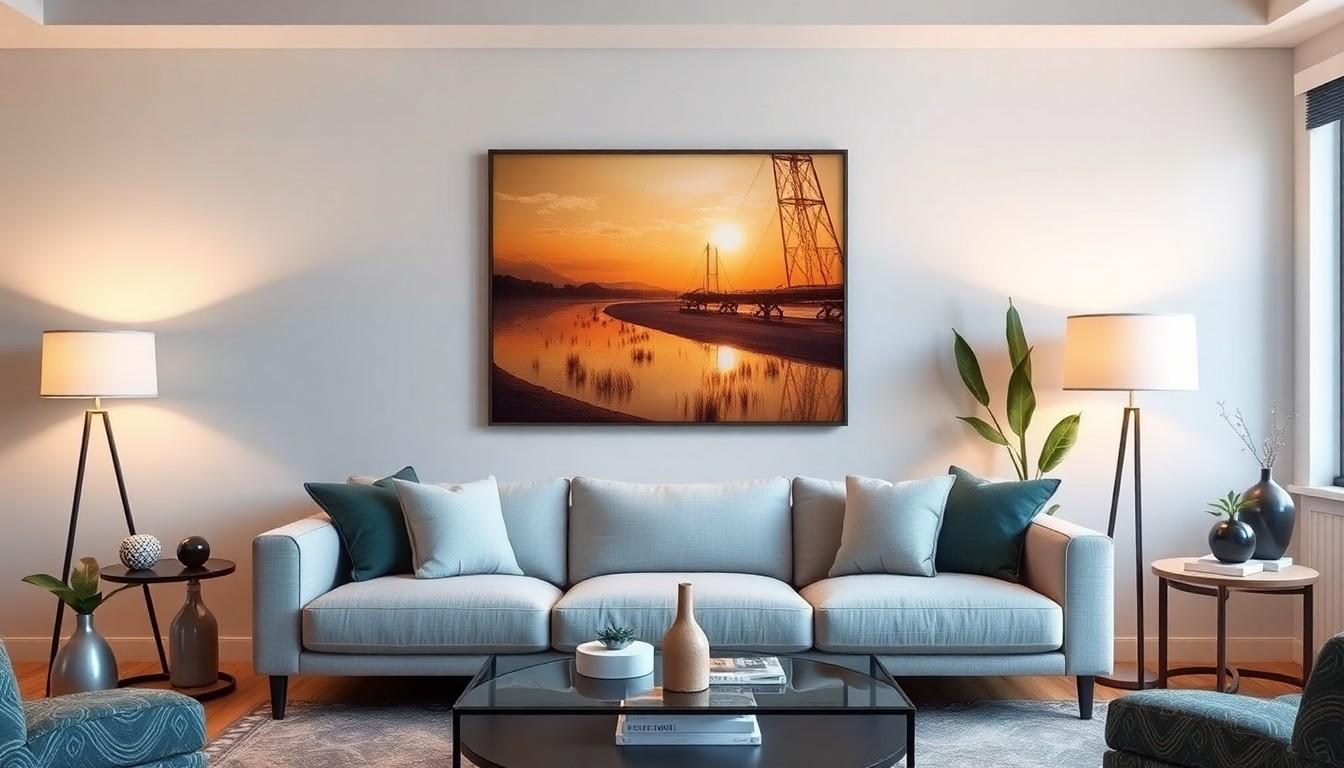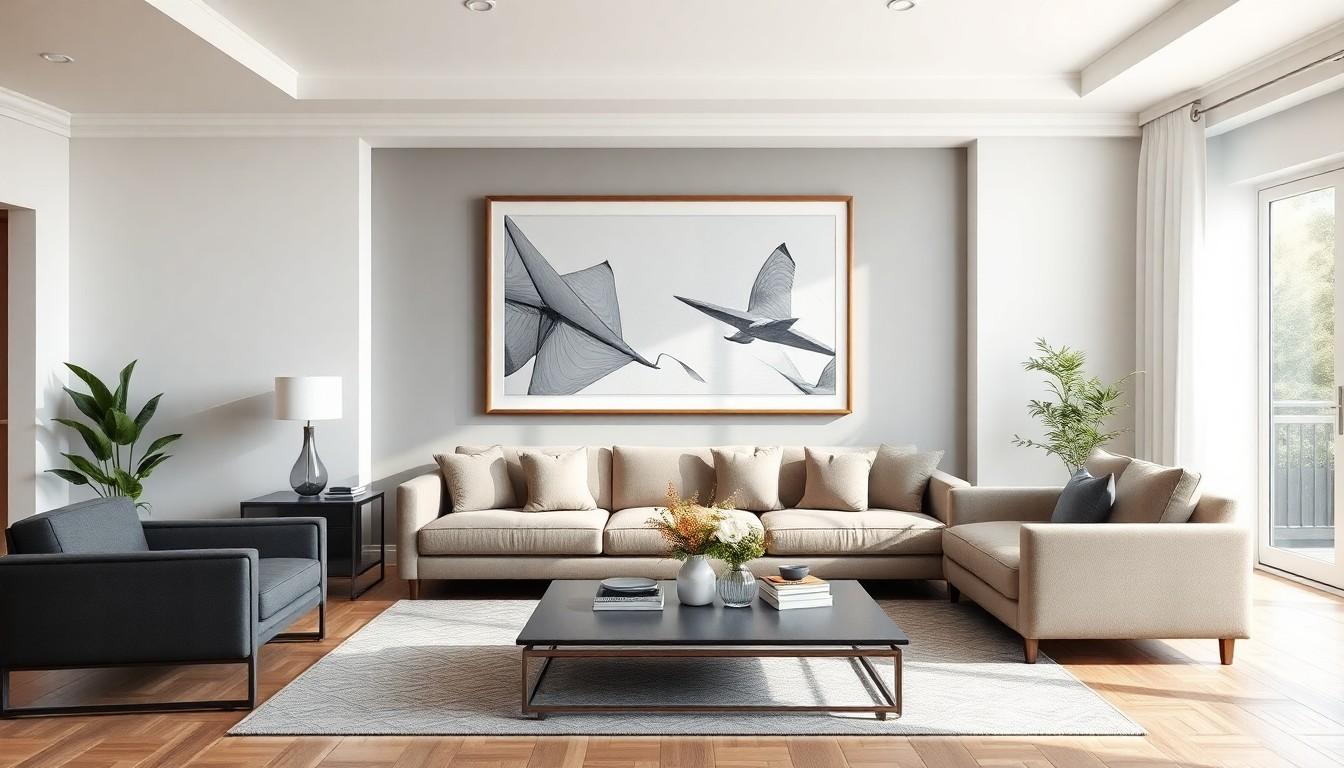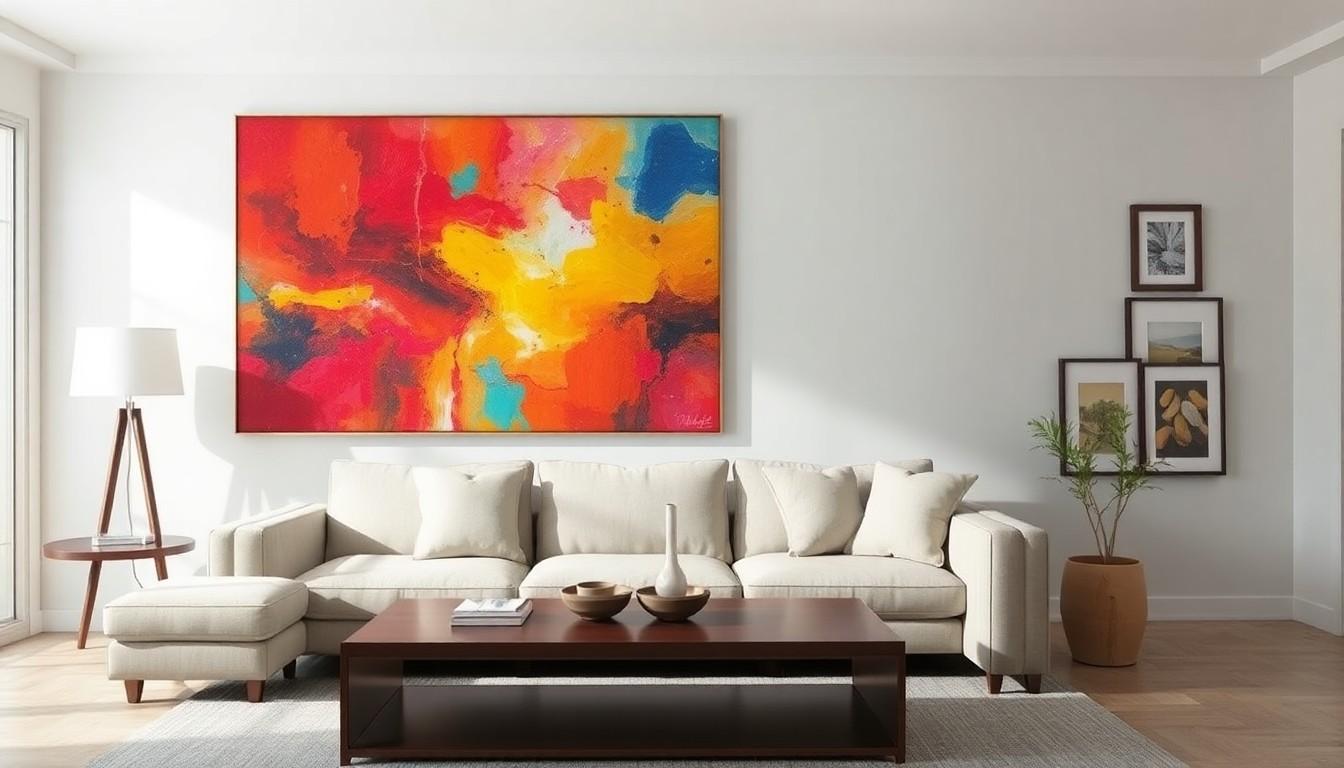Choosing the right wall art can feel like a game of Tetris—one wrong piece and the whole aesthetic crashes down. Whether it’s a cozy nook or a grand living room, sizing matters more than a toddler’s tantrum in a toy store. A well-placed piece not only enhances the space but also reflects personal style.
Wall Art Size Guide Inches
Choosing the right wall art dimensions is essential for achieving the desired effect in a space. Size influences how the artwork interacts with the surroundings.
Importance of Size in Wall Art
Size affects the visual balance and harmony in a room. Larger pieces, for instance, make bold statements and often become focal points. Conversely, smaller artworks can create layering and add depth. One should consider room proportions and wall space. An oversized piece in a small area can overwhelm, while tiny art in expansive spaces may seem lost. Proper sizing ensures that wall art complements other elements in the decor, enhancing the overall look.
Common Size Formats
Different formats cater to various spaces and styles. Standard sizes include 8×10 inches for compact areas and 24×36 inches for larger walls. Triptych arrangements, which typically span 30 to 60 inches combined, provide versatility and dynamic displays. Square formats, often measuring 20×20 inches or 36×36 inches, can add symmetry. Vertical designs, like 12×36 inches, draw the eye upward, which works well in narrow spaces. Each size format plays a unique role in creating a balanced composition within any room.
Choosing the Right Size for Your Space

Selecting the appropriate size for wall art significantly enhances a room’s aesthetic. Size impacts how the artwork integrates into a space.
Measuring Your Wall
Start by assessing the total wall area. Measuring the height and width provides essential data for selecting art. Aim to fill two-thirds of the wall space when combining art with furniture. Understand that the chosen dimensions affect the overall look. For example, a 24×36 inch piece on a large wall stands out, while smaller artwork, like 8×10 inches, creates a cozy feel. Remember to leave margins around artwork for a balanced appearance.
Considering Furniture and Layout
Consider existing furniture when choosing wall art. The height of furniture affects the ideal placement of art. Art above a sofa looks best when the bottom aligns between 6 and 12 inches above the back. Artwork should not overwhelm furniture but complement it. Reviewing the room layout, visual lines around furniture matters. Assemble smaller pieces into a gallery wall for an inviting vibe. Alternatively, a single larger piece creates a striking focal point that anchors the design.
Popular Wall Art Sizes
Choosing the right wall art size enhances the overall decor and atmosphere of a room. Different dimensions serve various functions, catering to diverse aesthetic preferences.
Standard Dimensions (Inches)
Standard wall art sizes cater to a broad range of spaces. Common dimensions include 8×10 inches, ideal for small nooks or accent displays. Another frequent choice is 16×20 inches, popular for gallery walls that require variety. Medium sizes such as 24×36 inches work well above sofas or mantels, providing balance and impact. The 30×40 inch format stands out as a statement piece in larger rooms or open spaces, creating a strong focal point. Selecting among these common dimensions simplifies the decoration process while ensuring that artwork complements existing furnishings.
Custom Sizes and Their Benefits
Custom wall art sizes provide flexibility for unique design needs. Tailoring dimensions to specific wall areas enables a seamless integration of art within a space. Bespoke options allow for maximizing visual interest, especially in unconventional layouts or tight corners. Unique sizes help in crafting standout fixtures that differentiate a room’s character. Custom pieces also offer personalization, letting individuals showcase their style while fitting perfectly within their living areas. This approach enhances the overall aesthetic, ensuring that each artwork contributes significantly to the room’s design narrative.

Placement Tips for Different Sizes
Choosing the right placement can enhance the impact of wall art in any space. Consider the following guidelines for both large and small artwork.
Large Artwork Placement
Large artworks make bold statements and serve as focal points in a room. Centering a piece on a wall works best, especially in expansive areas. When placing art above furniture, aim for 6 to 12 inches above the top of the piece for optimal balance. The size of the wall influences how large an artwork can appear; therefore, ensure sufficient wall space surrounding the piece. Identifying a blank wall can create an impressive feature that draws the eye. Also, grouping multiple large pieces together can add dimension and interest while maintaining a cohesive look.
Small Artwork Placement
Small artworks contribute layers to a space and invite exploration. When hanging multiple pieces, organize them in a grid or a salon-style arrangement for a gallery effect. Keeping a consistent spacing of 2 to 4 inches between pieces helps maintain clarity among various artworks. Utilize small art to accentuate specific areas or features within a room, such as above shelves or alongside mirrors. Consider combining smaller pieces to create a larger visual narrative, ensuring that each work complements its neighbor. Overall, embracing various placements encourages personal expression and enhances the room’s overall aesthetic.
Visually Appealing Environment
Choosing the right wall art size is essential for creating a harmonious and inviting space. It can transform a room’s atmosphere and reflect personal style when done correctly. By understanding the dimensions and placement of artwork, one can enhance the overall aesthetic and ensure that each piece complements its surroundings. Whether opting for a bold statement piece or a curated gallery wall, the right size can make all the difference. With careful consideration of wall space and proportions, anyone can achieve a balanced and visually appealing environment that truly showcases their unique taste.

